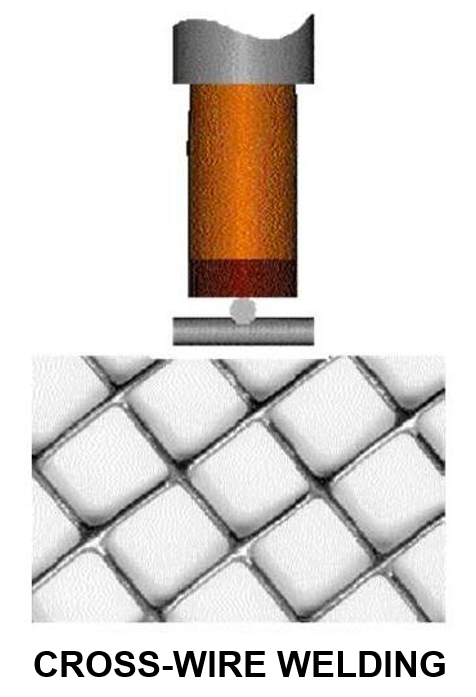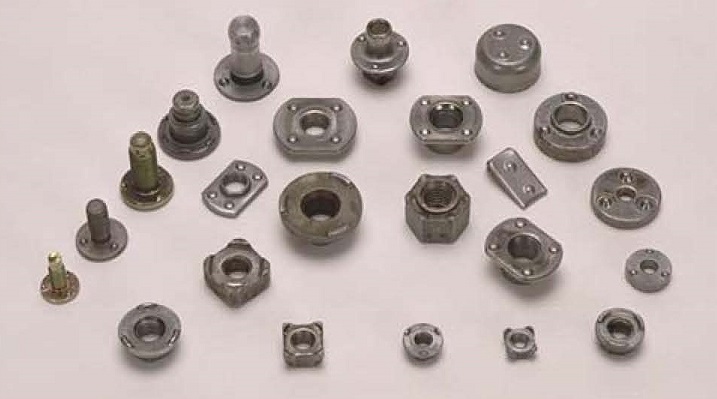
Projection Welding
Questions and Answers
Yes, projection welding is very common with wire. Cross wire welding is done every day to make fencing and grating.

Burrs in projection welding be it Capacitive Discharge, AC or MFDC resistance welding are caused by several factors. One is the inability to contain the molten weld nugget as it is forms. Another is the weld interface may have been overheated. A very important factor is that the full force must be maintained on the projections as they collapse. Pressure/force is a factor in each of these considerations. To reduce the burrs and weld flash/expulsion that creates this condition one must look at the basics of force application.
Material at 0.250” (6.4 mm) is generally beyond the limits for resistance spot welding. This question did not define the shape of this bar (round or square). The possibility of using a resistance welding process is viable on this bar with either shape if projection welding is used.
This question should be further elaborated to include how close should the fixture bottom support be to the outside of the nut wall? Secondly which is preferred a ball end shaped rod or a threaded bold for even consistent force application.

ASSORTED WELD NUTS
This is a question in two parts – Fixturing the assembly to be evaluated, and the push off tooling used to apply force directly against the actual weld nut.
Projection nut welding is an important process within the resistance welding community. Many different segments of industry use this process in the fabrication of their products. Automotive, appliance and aircraft are examples of a few.

ASSORTED WELD NUTS
Ironically, with millions of nuts being projection welded there is very little data published on the process. In another article in this blog:
"WHAT ARE THE QUALITY STANDARDS FOR NUT PROJECTION WELDING?"
The lack of data was addressed. Two published articles were referenced:
AWS WELDING JOURNAL: RWMA Q & A JANUARY & MARCH 2011 – “QUALITY OF FORGED PROJECTION WELD NUTS”
Page 7 of 21
Have a Question?
Do you have a question that is not covered in our knowledgebase? Do you have questions regarding the above article? Click here to ask the professor.
